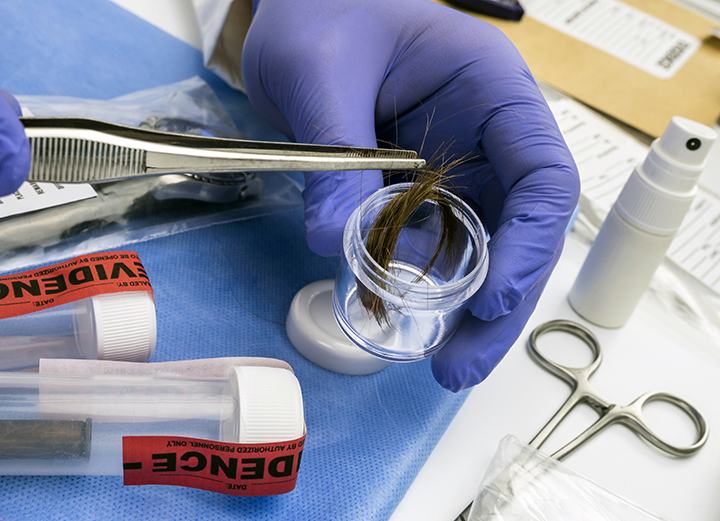WASHINGTON — The Department of Health and Human Services (HHS) in September published proposed mandatory guidelines for federal workplace drug-testing programs that includes guidelines for hair testing. The guidelines will allow federal executive branch agencies to collect and test a hair specimen as part of their drug-testing programs, with the limitation that hair specimens be used for pre-employment and random testing.
Under the guidelines, a federal agency choosing to test hair specimens must authorize collection and testing of at least one other specimen type that is authorized under the Mandatory Guidelines for Federal Workplace Drug Testing Programs, and provide procedures whereby the alternate specimen is used in the event that a donor is unable to provide a sufficient amount of hair, either for faith-based or medical reasons, or due to an insufficient amount or length of hair.
The proposed guidelines require collection of an alternate authorized drug-testing specimen in addition to the hair specimen, either simultaneously (i.e., at the same collection event) or when directed by the medical review officer after review and verification of laboratory-reported results for the hair specimen. This alternate specimen would be tested and reported in place of a donor’s positive hair specimen only in certain circumstances.
HHS is also proposing that an alternate authorized drug-testing specimen be collected (i.e. simultaneously collected or collected and tested at the direction of the medical review officer after verification of a positive hair test result.)
That’s where the rub comes in with respect to the trucking industry, said David Heller, vice president of government affairs for the Truckload Carriers Association.
“What makes the guidelines problematic to everyone is that in the event a driver tests positive with the use of a hair test and there is no given reason for the positive results,” he explained.
“Reasons can be a valid prescription or a driver admitting to the use of a controlled substance Regardless, if no medical reason exists, and outside of a prescription, and it most likely won’t, the positive hair test must be followed up with an alternative test, most likely a urine test,” he continued. “Everyone in the industry knows that hair testing will reveal a much greater history of drug use than a urine test will. The results of the alternative urine test will be the deciding test, thus rendering hair testing for drugs as a weak test.”
Trucking-industry stakeholders have long contended that hair testing is far more reliable in identifying substance abusers than urine testing. The Trucking Alliance in 2019 conducted a study comparing pass/fail rates for urine and hair drug screens. Using 151,662 paired pre-employment urine and hair drug test results from 15 different trucking companies, the results of the study indicated that 949 (0.6%) applicants failed the urine test, while 12,824 (8.5%) failed or refused the hair test.
The Trucking Alliance extrapolated its results over a population of 3.5 million U.S. truck drivers and claimed that, if its results were generalized across the U.S. driver population, almost 300,000 current drivers would not be on the road if forced to pass a hair test.
“A urine drug test misses as many as nine of 10 actual drug users, but a hair test captures them,” said Lane Kidd, managing director of the Trucking Alliance. “So, it’s surprising this administration proposes to tie the hands of an employer from disqualifying a person unless they fail both a hair and urine drug test. This proposal is unworkable and why the Trucking Alliance is pursuing regulatory and legislative avenues to make sure hair tests are recognized and can rid the industry of drug impaired truck drivers.”
In the proposed guidelines, HHS predicts the number of hair tests conducted will be minimal. Using data obtained from the Federal Workplace Drug Testing Programs and HHS-certified laboratories, HHS estimates that 275,000 urine specimens are tested annually by federal agencies. HHS projects that approximately 1% (or 2,750) of the 275,000 specimens tested per year will be hair specimens and 89% (or 244,750) will be urine specimens, with the remaining approximately 10% being oral fluid specimens (27,500).
In response to the HHS testing predictions, Heller noted that the roughly 1% of hair specimen tests that HHS predicts, would only happen if this rule moves forward as written, referencing the fact that the rule provides little benefit to carriers that are achieving “such tremendous” results with this form of testing. Many could be reluctant to partake in such a program if positive hair test results are required to be supported by positive urine-based tests.
“Time and again, trucking has represented itself as a zero-tolerance industry when it comes to drugs and alcohol in the workplace,” Heller stated. “That being said, these proposed guidelines do very little support that position.”
Lyndon Finney’s publishing career spans over 55 years beginning with a reporter position with the Southwest Times Record in Fort Smith, Arkansas, in 1965. Since then he’s been a newspaper editor at the Southwest Times Record, served five years as assistant managing editor of the Arkansas Democrat-Gazette in Little Rock and from November 2004 through December 2019 served as editor of The Trucker. Between newspaper jobs he spent 14 years as director of communications at Baptist Health, Arkansas’ largest healthcare system. In addition to his publishing career he served for 46 years as organist at Little Rock’s largest Baptist church.








